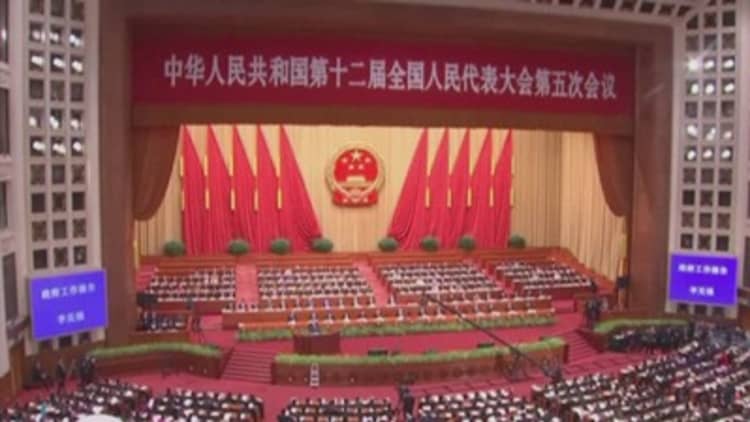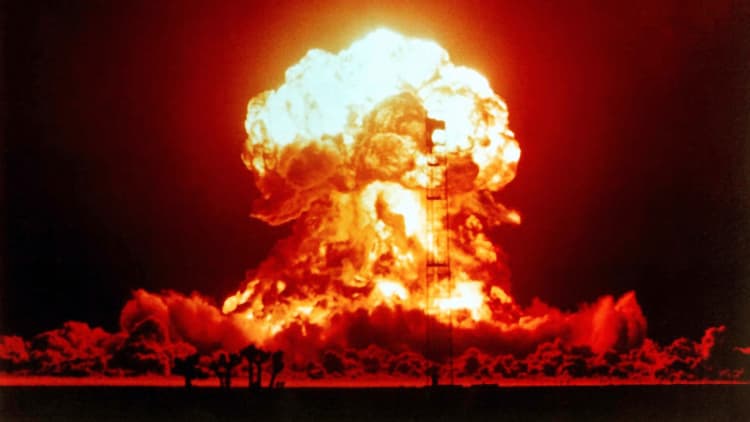A powerful U.S. anti-missile system designed to protect South Korea is sparking regional anxiety that's begun hitting one of Asia's most important economies.
The system, known as Terminal High Altitude Area Defense, or THAAD, is designed to defend South Korea and Japan from missile attack. North Korea and its unpredictable leader Kim Jong Un possess nuclear weapons and make a habit of regularly threatening neighbors.
THAAD, which could be operational as soon as summer 2017, uses radar to track when a ballistic missile is launched and then intercepts and destroys the missile before it descends onto its target.
This month, in the most recent show of force, North Korea launched four ballistic missiles into the Sea of Japan. The United States has taken a more aggressive tone with North Korea, with Secretary of State Rex Tillerson saying on Friday that military action against the country is "on the table."
"THAAD will contribute to a layered missile defense by significantly enhancing Alliance missile defense capabilities against North Korea missile threats," Maj. Jennifer Lovett of U.S. Forces Korea Public Affairs told CNBC.
China gets upset, retaliates against South Korea
Further complicating the deployment of the anti-missile system is China. Beijing views THAAD as a threat to its own military operations — specifically in the South China Sea. Beijing claims possession of the disputed region, which serves as a channel for half of the world's shipping and which the rest of the world, including the United States, considers international waters. China's claims on the sea stretch thousands of miles from the Chinese mainland.
In early March, Chinese Foreign Ministry spokesperson Geng Shuang told reporters that, "Our position on THAAD is very clear. We are firmly opposed to the deployment of THAAD" in South Korea. "This position is very firm."
U.S. officials insist the system has nothing to do with China and point out that it is not an offensive weapon.
"THAAD is a purely defensive system designed to counter short- and medium-range regional ballistic missiles. It will not undermine China's or Russia's strategic deterrent," said U.S. Navy Commander Gary Ross.
Experts on the region, including former U.S. Ambassador Thomas Hubbard, and Richard Weitz, director of the Hudson Institute's Center for Political-Military Analysis, told CNBC that a warming trend between South Korea and China was put to an end by the THAAD issue. China is South Korea's largest trading partner.
"China has already engaged in one of its most assertive influence campaigns in recent history to prevent the THAAD deployment, encompassing threatening leadership speeches, alarming media commentary, and most recently coercive economic pressure that has included government-sanctioned trade boycotts," Weitz said.

Think tank Eurasia Group told CNBC that China's retaliation against the anti-missile system is becoming a threat to South Korea's economy.
China has in recent weeks begun alleging code violations against South Korean firms as an excuse to shut down some of South Korean company Lotte's retail facilities in China, and it has blocked online trade in South Korean goods.
China has lashed out at high-profile Korean firms in entertainment, consumer goods, travel and the like. Lotte did not immediately return a CNBC request for comment.
Also this month, Beijing began impeding tourist travel from China to South Korea, a popular destination for Chinese citizens.
"Some estimates suggest that Beijing's travel ban could reduce the number of Chinese visitors to South Korea by up to 70 percent, resulting in billions of dollars in lost tourism-related revenue," Scott Seaman, director of Asia at the Eurasia Group, wrote in a note to clients.
WATCH: This former defense secretary is terrified of nuclear catastrophe

Correction: The U.S. anti-missile system is known as Terminal High Altitude Area Defense, or THAAD. An earlier version misstated the name.


